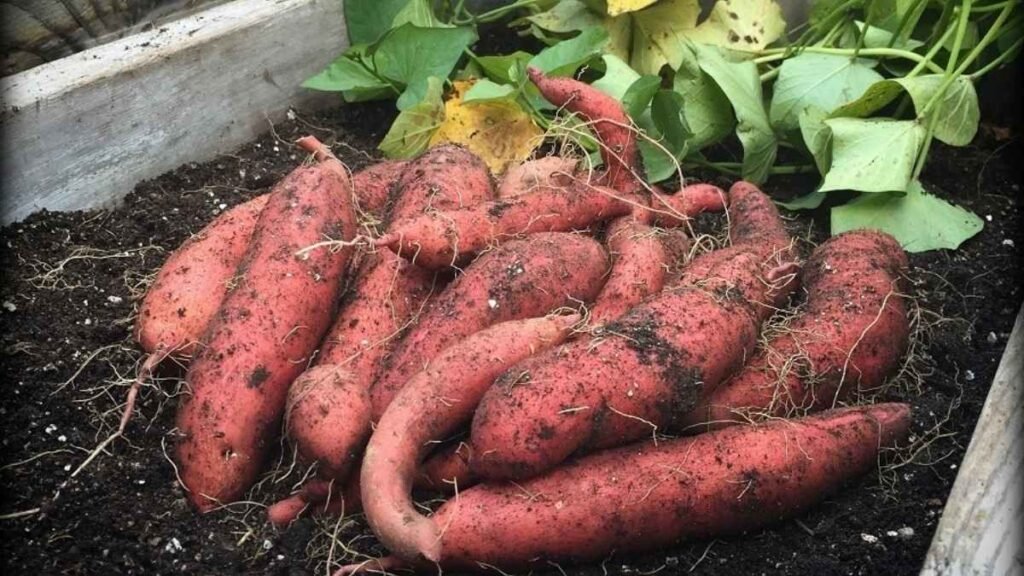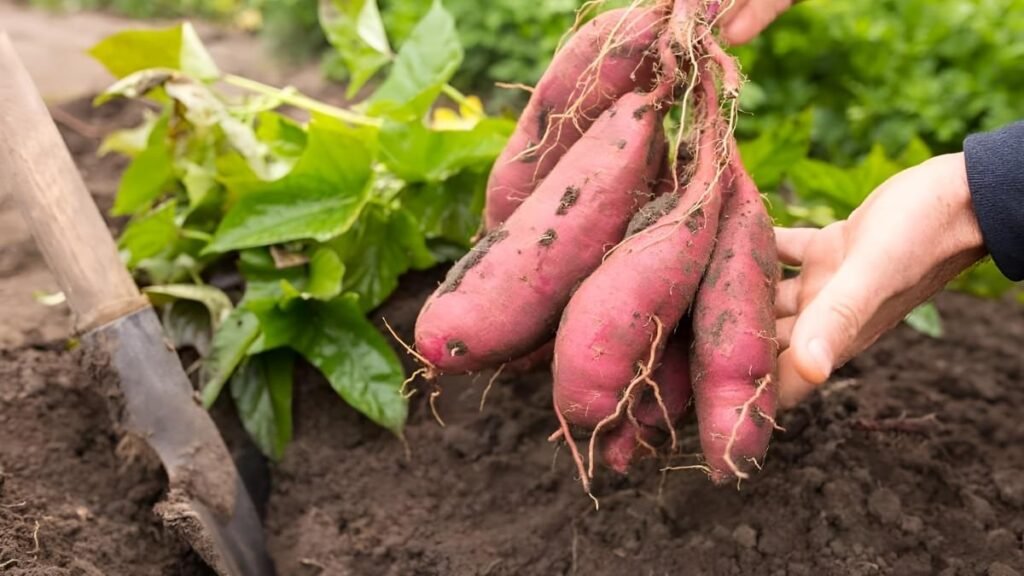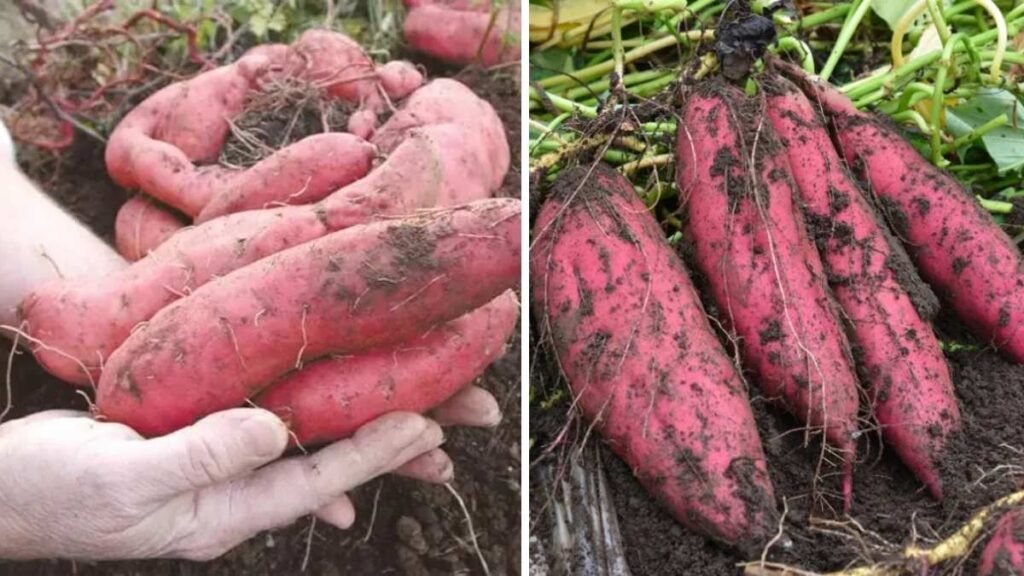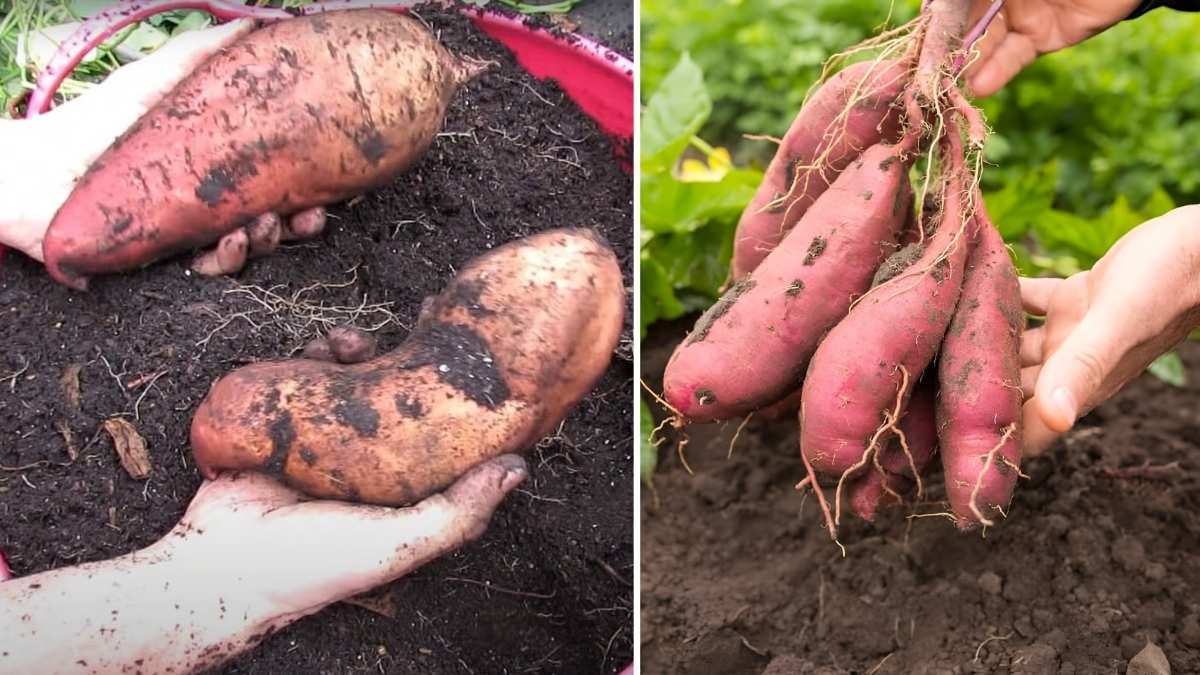Sweet potatoes are a highly nutritious, versatile crop that thrives in various climates and environments. Whether you’re a seasoned gardener or just starting, growing sweet potatoes indoors in containers can be a rewarding experience. It’s perfect for those who live in urban areas, have limited outdoor space, or simply want to enjoy fresh, homegrown produce year-round. This guide will walk you through everything you need to know about growing sweet potatoes indoors in containers, from selecting the right container to harvesting your crop.
Why Grow Sweet Potatoes in Containers?
Growing sweet potatoes in containers has many advantages, especially if you’re growing them indoors:

- Space Efficiency: Container gardening is ideal for small spaces like apartments, balconies, or patios. Even if you don’t have a garden, you can grow sweet potatoes in containers indoors.
- Control Over Soil and Watering: Growing indoors gives you control over soil quality and moisture levels, reducing the risks of common garden pests and diseases.
- Mobility: You can move the containers around to get the optimal amount of sunlight, or to protect plants during harsh weather or seasonal changes.
- Fewer Pests: Indoor containers are less vulnerable to soil-borne pests like nematodes or fungi, making pest management much easier.
Choosing the Right Container
The success of your indoor sweet potato garden depends largely on choosing the right container. Since sweet potatoes need room to grow and develop tubers, selecting a deep and wide container is crucial.

- Size: Aim for a container that’s at least 12-18 inches deep and 18-24 inches wide. The more space the plant has, the better the chances of healthy tuber formation.
- Material: Opt for containers made of plastic, clay, or fabric. Plastic is a good option for moisture retention, while clay offers excellent drainage. Fabric pots are excellent for aeration and are highly flexible.
- Drainage: Make sure the container has plenty of drainage holes. Without proper drainage, the soil can become waterlogged, leading to root rot.
Selecting the Best Sweet Potato Varieties
While there are many varieties of sweet potatoes, some are better suited for container gardening indoors. Look for varieties with compact growth habits and shorter vines.

- Compact Varieties: Varieties like ‘Beauregard,’ ‘Georgia Jet,’ or ‘Vardaman’ are great choices because they have shorter vines and are well-suited for container life.
- Taste and Color: Sweet potatoes come in various colors—orange, white, and purple. Each type offers different benefits, like the orange varieties being rich in beta-carotene and purple varieties packed with antioxidants.
- Maturity Time: If you live in a region with a shorter growing season or want faster results, consider early-maturing varieties that are ready in 90-100 days.
Preparing the Soil
Sweet potatoes thrive in loose, well-draining soil that is slightly acidic to neutral. You’ll need to create the perfect growing environment to ensure your tubers develop well.
- Soil Mix: A mixture of loamy soil, compost, and sand works well. The compost will enhance fertility and moisture retention, while sand provides drainage.
- Fertilization: Sweet potatoes don’t require a lot of fertilizer, but it’s important to avoid high-nitrogen fertilizers. Excessive nitrogen encourages vine growth rather than tuber production. A balanced fertilizer with phosphorus and potassium is ideal.
- Soil pH: Sweet potatoes prefer a slightly acidic soil pH (around 5.8–6.5). If your soil is too acidic, add agricultural lime to balance it out. For alkaline soils, mix in organic matter to lower the pH.
Propagating and Planting Sweet Potatoes
Sweet potatoes are typically propagated from slips, which are young shoots that grow from mature sweet potatoes. Here’s how you can get started:

- Preparing Slips: Place a healthy sweet potato in water or moist sand. After 2-3 weeks, you’ll see small sprouts forming. Once the sprouts are about 4-6 inches long, you can remove them and prepare them for planting.
- Rooting Slips: Before planting, let the slips root in water for a few days. This helps them establish a stronger foundation once planted.
- Planting: Fill your container with prepared soil, leaving a 2-3 inch gap from the top. Plant the slips about 2-3 inches deep, ensuring the stem remains upright. If using a large container, space multiple slips evenly.
Watering and Care
Watering and care are key to growing healthy sweet potatoes indoors. Here are some tips to keep your plants thriving:
- Watering: Keep the soil consistently moist, especially in the first 4-6 weeks. Sweet potatoes need plenty of water but avoid overwatering, as soggy soil can lead to root rot.
- Mulching: Apply a layer of organic mulch, such as straw or dried leaves, on top of the soil. This helps to retain moisture, regulate soil temperature, and suppress weeds.
- Sunlight: Place the container in a location that receives at least 6-8 hours of direct sunlight daily. Sweet potatoes need plenty of light to produce healthy vines and tubers. If natural light is insufficient, consider supplementing with grow lights.
- Vine Management: Sweet potato vines can grow long, so it’s essential to manage their growth. Regularly trim back excess vines to redirect energy to tuber production. You can also train the vines to climb a trellis if you’re tight on space.
Fertilization and Nutrient Management
Sweet potatoes don’t require heavy feeding, but periodic fertilization can improve tuber development.
- Organic Fertilizers: Consider using compost tea, well-rotted manure, or organic liquid fertilizers every 3-4 weeks to provide essential nutrients.
- Micronutrients: Sweet potatoes need sufficient potassium and phosphorus for healthy root growth. Keep an eye on nutrient levels and supplement as necessary.
Pest and Disease Management
While sweet potatoes grown in containers are less susceptible to pests, some still pose a threat, including aphids and sweet potato weevils.
- Pest Control: Inspect your plants regularly for pests. Use insecticidal soap or manually remove pests when necessary.
- Diseases: Fungal infections, such as leaf blight, can occur in damp conditions. Ensure the container has proper drainage, and remove any infected leaves immediately.
Harvesting Sweet Potatoes
Your sweet potatoes will typically be ready for harvest 90-120 days after planting, depending on the variety.
- Signs of Maturity: The leaves will start to yellow, and the vines may begin to die back.
- Harvesting: Carefully dig around the base of the plant with your hands or a garden fork. Gently lift the tubers out of the container to avoid damaging them.
- Curing: After harvesting, cure the sweet potatoes in a warm, humid environment (around 25-30°C with 85-90% humidity) for about 7-10 days. This helps to enhance sweetness and extend their shelf life.
Storing Sweet Potatoes
Proper storage is key to preserving your harvest:
- Storage Location: Store cured sweet potatoes in a cool, dry, dark place (ideally around 13–16°C). Avoid refrigerating them, as cold temperatures can alter their flavor and texture.
- Storage Duration: When stored properly, sweet potatoes can last several months, providing a long-term source of nutritious food.
Conclusion
Growing sweet potatoes in containers indoors is a practical and rewarding way to enjoy homegrown produce year-round. With the right container, proper soil preparation, and regular care, you can cultivate a healthy crop of sweet potatoes. By following the steps outlined in this guide, you’ll be able to enjoy delicious, fresh sweet potatoes right from the comfort of your home.




